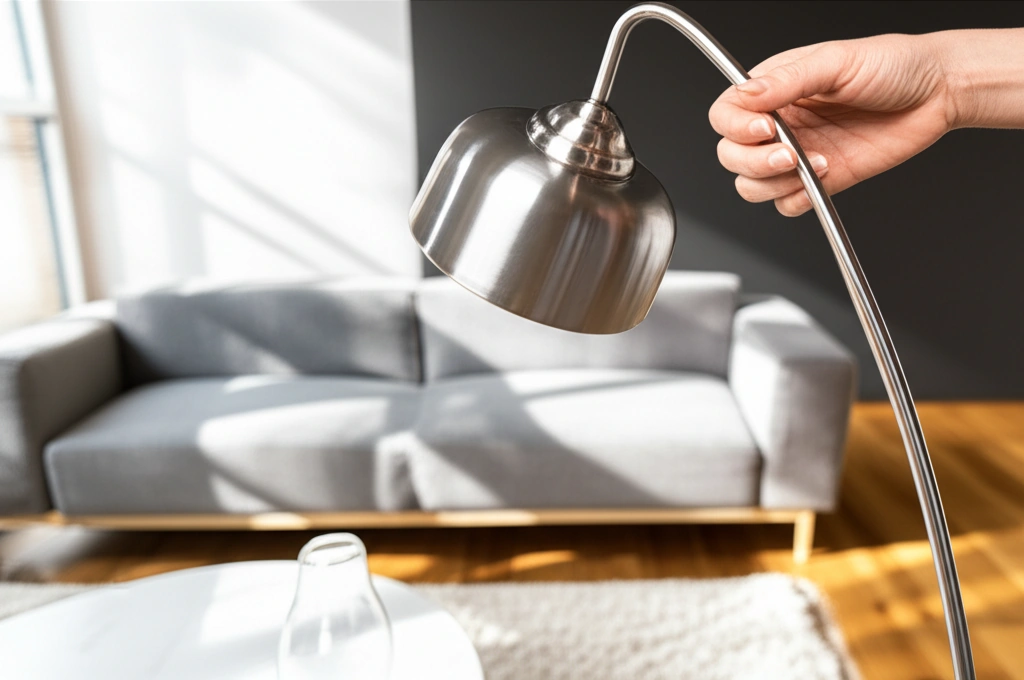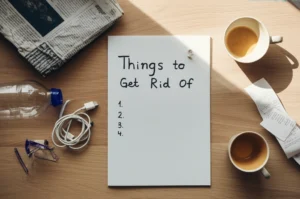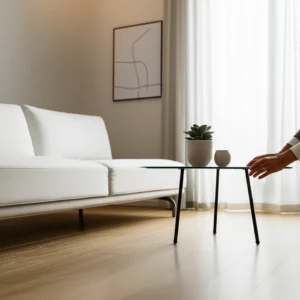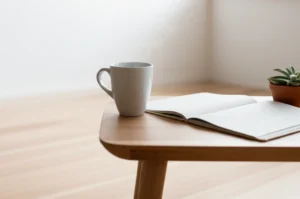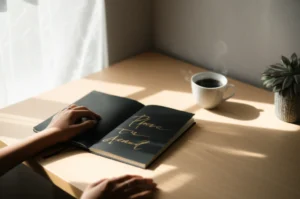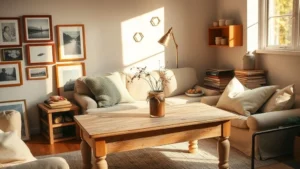You know those days when your home feels a little… crowded? Every surface brimming with stuff, and you can’t quite find the calm. Been there. So many of us are searching for breathing room—literally and mentally. That’s what draws so many people to the idea of a minimalist house interior: a place where less truly feels like more.
This isn’t just about tossing all your things and living with a single chair in an all-white room (unless that’s your dream, which, hey, go for it). Minimalism is more like a gentle reset—a way to filter out the noise, keep what matters, and make your home a real sanctuary. And the beauty of it? It works whether you’re in a spacious house or a snug city apartment.
Why Minimalism Now
Let’s get right to it. Why are so many people talking about minimalist house design? Honestly, because it works. Removing visual clutter makes life feel lighter, your home feels bigger, and you save time cleaning (major bonus). Imagine fewer things fighting for your attention—the relief is real.
But here’s the thing nobody says up front: minimalism isn’t about suffering or living with bare essentials (unless, again, that’s your thing). It’s about choosing what adds real value to your life, and designing your space to support you—not drain you. Isn’t that what we all want?
Benefits & Trade-Offs
Picture this: you walk into your living room, and everything in sight has a purpose or brings you joy. It’s not empty, it’s intentional. That’s the heart of a successful minimalist home interior. The bonus? Less stuff means less cleaning, and you won’t be tripping over yesterday’s impulse buys.
Minimalist interiors can also help melt away stress. It’s wild how much calmer you feel in a clutter-free room.according to design experts And if you’ve ever lost your keys under a pile of mail, you’ll love how much more functional your spaces become. But, because life isn’t just Pinterest-perfect images, there are a few challenges: sometimes, minimalist spaces can seem cold or impersonal if you’re not careful. The secret? A “warm minimalism” approach—think textures, cozy throws, a few plants, and soft lighting to add life.
And don’t worry—this isn’t a one-and-done deal. It’s about balance: knowing what you need, gently letting go of what you don’t, and updating along the way. Start small and see what feels right for you.
Core Design Rules
Let’s demystify what minimalism looks like, shall we? Imagine a living room with a comfy, clean-lined sofa, a wooden coffee table, maybe one beautiful piece of art. Surfaces are mostly clear. There’s a cozy rug underfoot. You can breathe easier just thinking about it.
- Less but better: Each item earns its spot. Multi-use furniture, quality over quantity. If a piece isn’t serving a purpose (useful or beautiful), it’s got to go.
- Neutral, soft palette: Minimalist interiors often lean on whites, beiges, pale greys, and light wood. This doesn’t mean boring—layer in textures like boucle, linens, soft rugs, and touches of greenery for warmth and a lived-in feel.
- Clean lines: Furniture with simple shapes, open floor space, and little to no frills. You’ll often see furniture legs that show off the space beneath and simple, streamlined shelving.
- Natural light: Keep window treatments soft and breezy—think sheer curtains or simple blinds that let the sun pour in. Natural light makes everything look more inviting.
Don’t think of it as stripping away your style. Think of it as editing your space until only the truest, most “you” pieces remain.
Room-by-Room Minimalist Guide
If you’re wondering where to start, here’s a walk-through of how to bring minimalism into each part of your home. Spoiler: you don’t have to do it all at once!
Living Room
The living room is ground zero for clutter, right? To design a minimalist, calm gathering space:
- Keep it functional—sofa, one coffee table, maybe a favorite chair. Ditch the furniture that no one uses.
- Add just a touch of decor: one or two special things, like a striking vase or a leafy plant. That’s all.
- Storage is your friend; look for closed cabinets or built-in shelves to tuck things away, so surfaces stay clear. And if you want real inspiration, check out some awesome layouts in this minimalist home decor living room guide.
Kitchen
Let’s be real—the kitchen is where stuff multiplies! For a minimalist kitchen:
- Keep daily essentials handy; store the rest. Give each thing a “home”—from spatulas to mugs.
- Leave counters mostly empty. One (1) functional appliance, maybe a fruit bowl, and nothing else.
- Put away unused gadgets. If you only use the bread maker once a year… maybe it’s time to pass it along.
Bedroom
Your bedroom should feel like a recharging station, not a storage unit:
- Simple bed, a nightstand, and a lamp—maybe a calm piece of art or a small stack of treasured books.
- Breathable bedding in neutral tones keeps the energy relaxed and the look timeless.
- Clothes—store out of sight. If you can, try a “capsule wardrobe” to cut the noise (and the laundry pile).
Bathroom
- Only your daily-use products stay out. The rest? Away in drawers or cabinets.
- Choose soft towels in a single color family for a “home spa” vibe.
Entryway & Flex Spaces
- Hooks or a small bench are plenty—resist the urge to overload with shoes and stuff.
- Keep keys, bags, and mail out in the open only if you truly need them every day.
Decluttering & Smart Storage
Here’s where the rubber meets the road: decluttering. You don’t need to do it overnight! Try the “keep, donate/sell, store, toss” system. Start with one drawer—just one—empty it, choose what stays, and move on.
Lightning round tips:
- If you haven’t used it in the past six months and it’s not seasonal, question if you really need it.
- Multi-use furniture (benches with storage, sofa beds) are heroes in small or busy homes.
- Built-in storage, baskets, and closed cabinets help keep even the busiest rooms looking peaceful.
- Becoming a minimalist checklist gives you a practical, step-by-step way to tackle each room—and trust me, crossing off each tiny task is really satisfying.
Minimalist Home Checklist
Want a quick test? Here’s a mini minimalist home checklist to get started:
- Is each piece of furniture earning its keep?
- Are all surfaces mostly clear?
- Can you clean each room in under 10 minutes?
- Is your decor meaningful, or just… there?
- Could you host a guest at a moment’s notice without panic-cleaning?
If you’re nodding along, you’re already well on your way.
30 Days to a Minimalist House
If you want a real, specific plan, you don’t need to overhaul your whole life in one week. Here’s a gentle, “how to become a minimalist in 30 days” approach that actually works:
- Week 1: Clear visible clutter—tables, counters, and floors. One space at a time.
- Week 2: Closets, dressers, under-bed spaces. Be ruthless—and honest with yourself (do you truly wear those old sweaters?).
- Week 3: Storage areas—attic, garage, out-of-sight places. Assess, edit, simplify.
- Week 4: Fine-tune: rotate art, switch up plants, finalize your storage layout. Commit to new habits to keep things in check.
And every step of the way, remember: it’s about progress, not perfection. If you slip up and bring home a sale find you don’t truly need, don’t sweat it. Minimalism is a practice, not a finish line!
Warm Minimalism in Action
Let’s bust a myth: minimalist house interior doesn’t have to feel cold or uninviting. “Warm minimalism” is everywhere these days. According to recent design trends, it’s all about layering muted colors, natural textures, and just a few special objects. Plants, woven baskets, even a cozy knit throw draped on the sofa—these make a space feel alive, not sterile.
If you need inspiration, peek at real-life minimalist interiors—so many of them use soft, creamy colors and let lots of natural light in. It doesn’t have to look like a showroom—it should look like you live there, laugh there, and occasionally binge-watch your favorite shows there.
Real-Life Minimalist Living Examples
When I first tried minimalism, I started with the junk drawer in my kitchen (admit it, you have one too). It took less than ten minutes, and the satisfaction was unreal. Then, in the living room, I edited down to just a few books, one candle, and my favorite thrifted vase. Not only did the space look better, but I felt better—lighter, somehow.
I’ve read about families in small city apartments who carve out calm little zones with fold-down tables and storage ottomans. Or folks who go all in with Japandi minimalism—a gorgeous blend of Japanese and Scandinavian touches that’s all clean lines, natural materials, and a strong connection to the outdoors.according to tiny living experts
The secret’s the same everywhere: edit, organize, repeat. Make your space fit your life, not the other way around.
Where to Splurge, Where to Save
Let’s talk money for a sec. Minimalism can save you cash—you’re buying less, after all! But when you do buy, invest in things you use every day: a supportive mattress, a comfy sofa, durable storage. Save on throw pillows and seasonal accent pieces (thrift stores are goldmines!).
Think of this like building a capsule wardrobe for your house. A couple of solid, classic, functional pieces, sprinkled with a few affordable touches that make you smile.
Building Habits, Not Just Spaces
Minimalism isn’t just a design trend—it’s a way of life (okay, that sounds dramatic, but it’s true). The real magic happens when you create little routines: a quick tidy before bed, returning things to their homes, and taking a moment to pause before buying new stuff.
If you want extra guidance, the becoming a minimalist checklist breaks everything down into easy, bite-sized victories. You’ll be shocked how quickly it all adds up.
Minimalism’s Hidden Rewards
One last thing—minimalism brings long-term rewards nobody tells you about at first. You’ll find yourself with more time, extra focus, less stress. Hosting friends becomes a breeze. Even chores won’t feel so overwhelming. And when life inevitably gets a bit messy (as it does), you’ll have a calm space that welcomes you home. Isn’t that what we’re all after?
Wrapping Up
Minimalist house interiors aren’t about living with nothing—they’re about making room for everything you truly need and love. Start small, trust your instincts, and enjoy the process! There’s no “perfect” way to do this—your version will look different from everyone else’s, and that’s exactly right.
So, is today the day you start that junk drawer clear-out, or tackle your living room with fresh eyes? What do you think about living with less but loving it more? Try a few ideas here and see how it feels—invite that sweet sigh of relief into your daily life. And remember, if you ever need a little nudge or checklist to keep you motivated, you’re always welcome to reach out for tips or share your experience. Here’s to calm, clean, and welcoming spaces, and to finding joy in the simplicity that was right under your nose all along.

